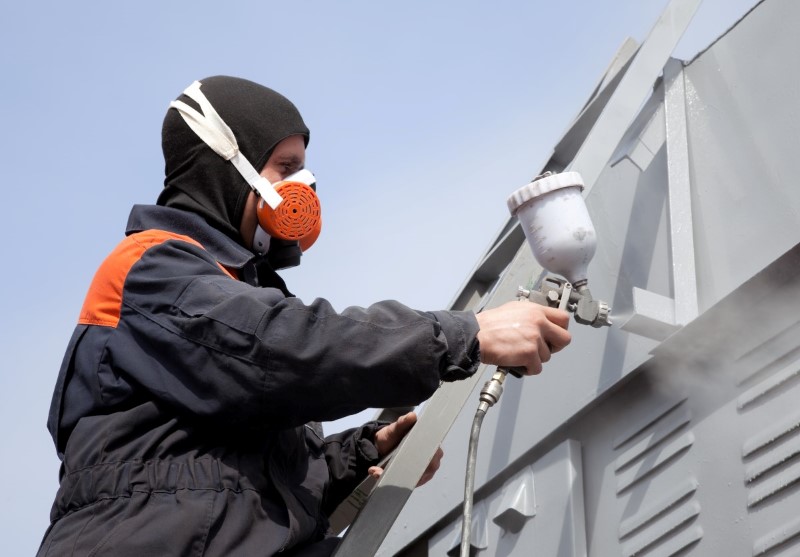Newmarket’s Top Industrial Painting & Sandblasting Company
It takes a lot of effort to open a business, so once you manage to get one on its feet, you need to do whatever you have to to keep it on its feet. And among the many things you have to do in that endeavor, one of the most important is maintaining a beautiful coating of paint. And here in Newmarket, doing that is as easy as calling Diotte Coating Services.
With many years of experience, we have the know-how and the expertise to provide a thorough painting for your business. Should that business be industrial-based, you can depend on us to get it looking its best thanks to our industrial painting service. Whether you need a building, a silo, or even a piece of machinery painted, you can always rely on us.
We’re also experts at prepping industrial-grade surfaces for painting, thanks to our sandblasting surface. In no time at all, a sandblasting will thoroughly prep your industrial surfaces so that a new paint coating will continue looking beautiful for years to come. If you’re in the market for the best industrial painting company in Newmarket, give us a call today.

Fast, Dependable Industrial Painting Services in Newmarket
Being constructed largely of metal components, your industrial buildings run the risk of suffering corrosion and rust. These problems can severely lower your industrial components’ lifespans while also making the workplace far less safe than it could be. For those reasons, you need to help prevent corrosion and rust in whatever ways you can.
And a great way to do just that is with a fresh industrial painting from the pros at Diotte Coating Services. A fresh industrial coating of paint will help protect your industrial installations from rust and corrosion, thus keeping your business protected — which itself will protect your bottom line, as all business owners certainly want.
Sandblasting Services You Can Depend on in Newmarket
You can have the highest-quality paints applied by the most capable painters around, but if those paints are applied to a surface that’s not prepped properly, the final results will always be awful. Thus, you’ll need to have your industrial surfaces prepped before a painting, and a great way to prep them is with a sandblasting.
A sandblasting will quickly yet thoroughly prepare any industrial surface to accept a fresh coating of paint. For the quickest and most thorough sandblasting, you can’t go wrong by calling the pros at Diotte Coating Services. We’ll get any of your industrial surfaces prepped to take on and maintain the most beautiful coating of paint you could ask for.
Get Great Painting Services from Newmarket’s Experienced Pros
For nearly 20 years now, we at Diotte Coating Services have provided top-notch sandblasting and industrial painting work to businesses in and around the Newmarket area. With our experience and track record for excellence, you can depend on us to provide the best painting services for your industrial business.
Recent Articles
Understanding Abrasive Blasting Services: Transforming Surfaces with Precision
Newmarket’s Top Industrial Painting & Sandblasting Company It takes a lot of effort to open a business, so once you […]
Why is it Essential for Industrial Surfaces to be Prepared for Coating?
Newmarket’s Top Industrial Painting & Sandblasting Company It takes a lot of effort to open a business, so once you […]
If you are looking for a sandblasting company in Newmarket, please call 905-259-2927 or complete our


